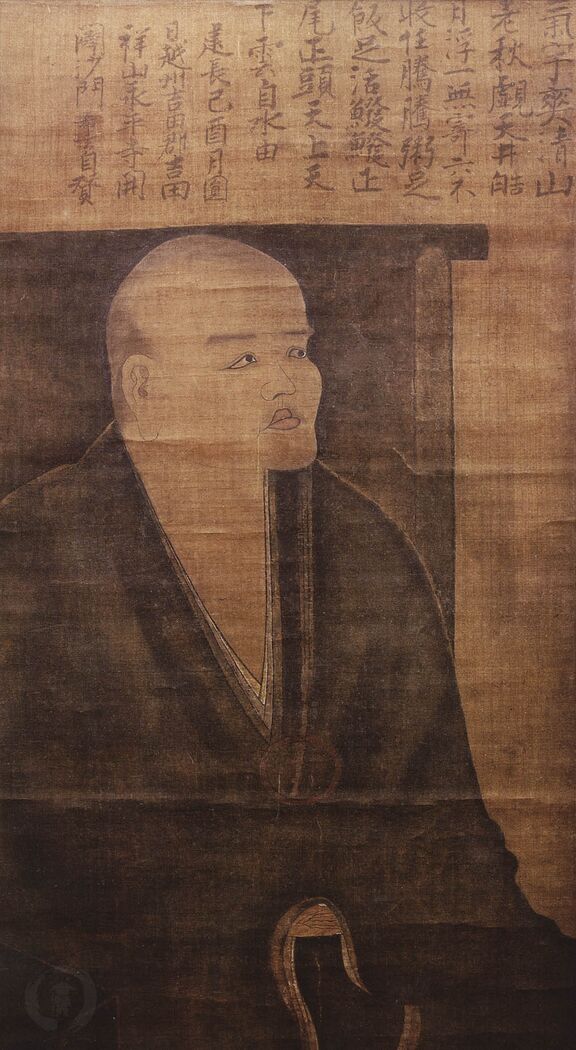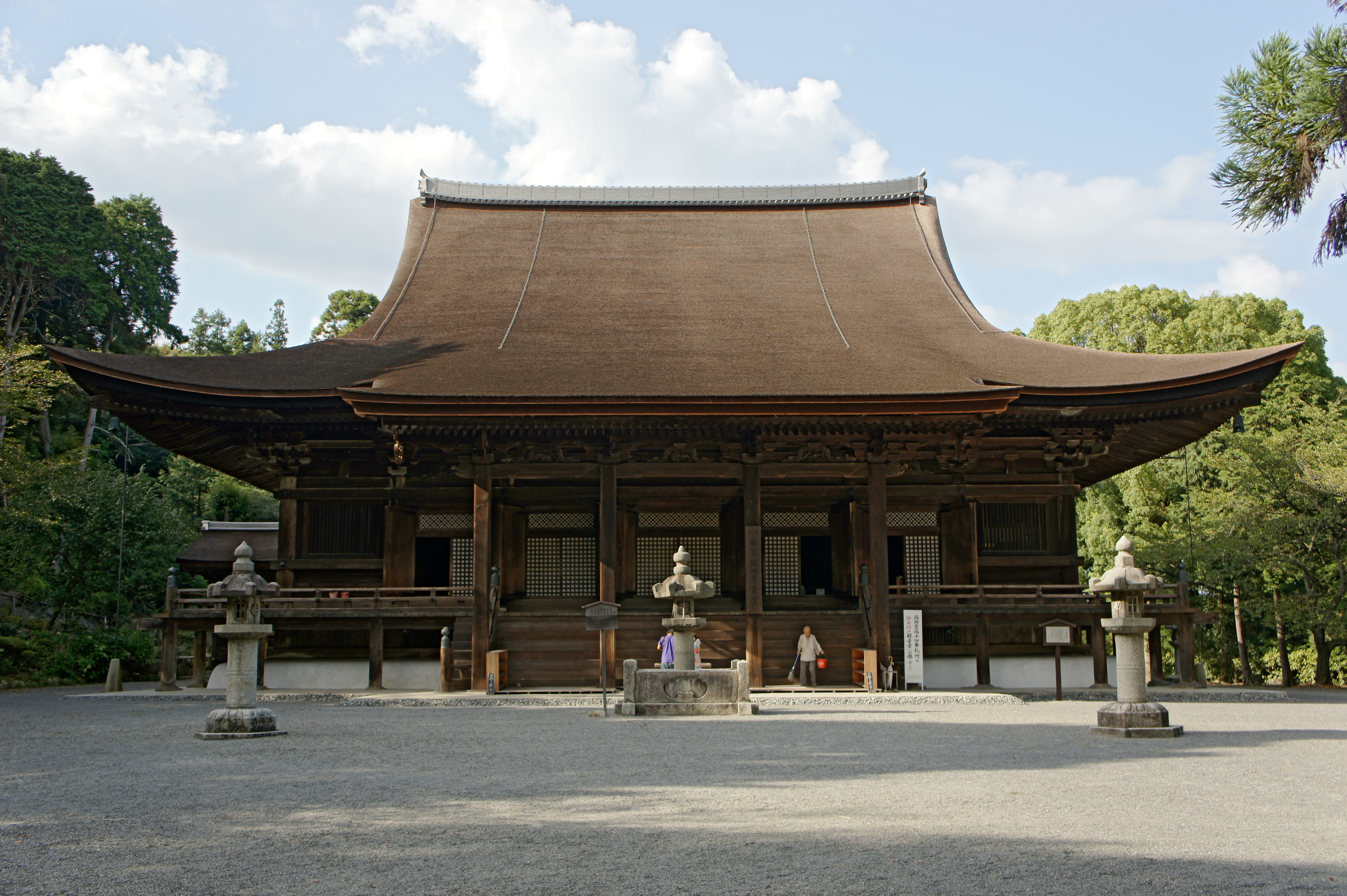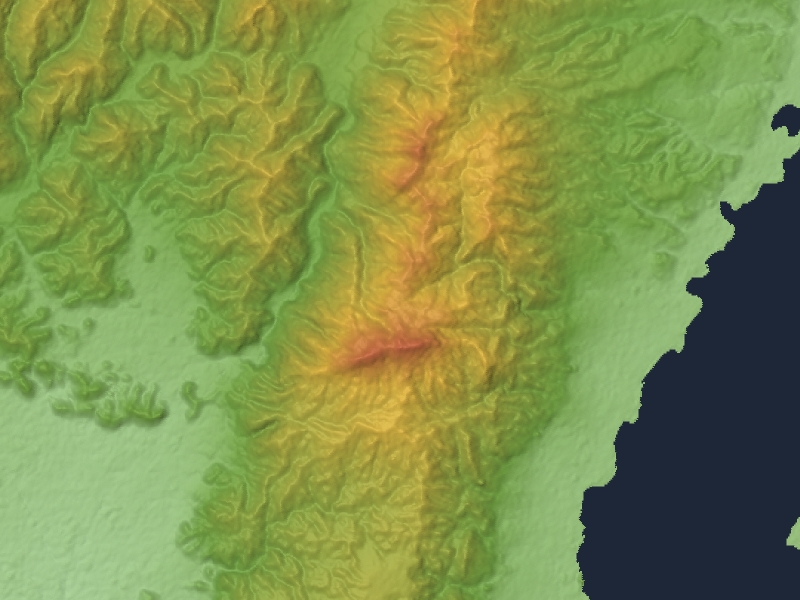|
Dōgen Zenji
Dōgen Zenji (道元禅師; 26 January 1200 – 22 September 1253), also known as Dōgen Kigen (道元希玄), Eihei Dōgen (永平道元), Kōso Jōyō Daishi (高祖承陽大師), or Busshō Dentō Kokushi (仏性伝東国師), was a Japanese Buddhist priest, writer, poet, philosopher, and founder of the Sōtō school of Zen in Japan. Originally ordained as a monk in the Tendai School in Kyoto, he was ultimately dissatisfied with its teaching and traveled to China to seek out what he believed to be a more authentic Buddhism. He remained there for four years, finally training under Tiantong Rujing, an eminent teacher of the Caodong lineage of Chinese Chan. Upon his return to Japan, he began promoting the practice of zazen (sitting meditation) through literary works such as '' Fukanzazengi'' and '' Bendōwa''. He eventually broke relations completely with the powerful Tendai School, and, after several years of likely friction between himself and the establishment, l ... [...More Info...] [...Related Items...] OR: [Wikipedia] [Google] [Baidu] |
Kyoto
Kyoto (; Japanese: , ''Kyōto'' ), officially , is the capital city of Kyoto Prefecture in Japan. Located in the Kansai region on the island of Honshu, Kyoto forms a part of the Keihanshin metropolitan area along with Osaka and Kobe. , the city had a population of 1.46 million. The city is the cultural anchor of a substantially larger metropolitan area known as Greater Kyoto, a metropolitan statistical area (MSA) home to a census-estimated 3.8 million people. Kyoto is one of the oldest municipalities in Japan, having been chosen in 794 as the new seat of Japan's imperial court by Emperor Kanmu. The original city, named Heian-kyō, was arranged in accordance with traditional Chinese feng shui following the model of the ancient Chinese capital of Chang'an/ Luoyang. The emperors of Japan ruled from Kyoto in the following eleven centuries until 1869. It was the scene of several key events of the Muromachi period, Sengoku period, and the Boshin War, such as the Ōnin War, ... [...More Info...] [...Related Items...] OR: [Wikipedia] [Google] [Baidu] |
Fukan Zazengi
''Fukan zazengi'' (), also known by its English translation ''Universal Recommendation for Zazen'', is an essay describing and promoting the practice of zazen written by the 13th century Japanese Zen monk Eihei Dōgen. The date of its composition is unclear, and the text evolved significantly over the author's lifetime. It is written in Classical Chinese rather than the Classical Japanese Dōgen used to compose his famous Shōbōgenzō. It is traditionally thought to have been composed in 1227, shortly after Dōgen's return to Japan from his years of study in China. This is based on a statement to that effect in his essay Bendōwa from 1231. However, a manuscript of ''Fukan zazengi'' discovered in modern times that was produced by Dōgen's own hand ends with a Colophon (publishing) stating it was written in 1233. This version, known as the Tenpuku manuscript, also has a number of major differences from the more widely known version, the "vulgate version". The vulgate version, whi ... [...More Info...] [...Related Items...] OR: [Wikipedia] [Google] [Baidu] |
Mii-dera
, formally called , is a Buddhist temple in Japan located at the foot of Mount Hiei, in the city of Ōtsu in Shiga Prefecture. It is a short distance from both Kyoto, and Lake Biwa, Japan's largest lake. The head temple of the Jimon sect of Tendai, it is a sister temple to Enryaku-ji, at the top of the mountain, and is one of the four largest temples in Japan. Altogether, there are 40 named buildings in the Mii-dera complex. Mii-dera is temple 14 in the Saigoku Kannon Pilgrimage. History Founding, and feuds Onjō-ji was founded in the Nara period. The temple was founded in 672 following a dispute over Imperial succession. Emperor Tenji had died, and his son was killed by Tenji's brother, who was then enthroned as Emperor Tenmu. Temmu founded Onjō-ji in honor and memory of his brother. The name ''Mii-dera'' ("Temple of Three Wells") came about nearly two centuries later. It was given this name by Enchin, one of the earliest abbots of the Tendai Sect. The name comes ... [...More Info...] [...Related Items...] OR: [Wikipedia] [Google] [Baidu] |
Hongaku
Hongaku () is an East Asian Buddhist doctrine often translated as "inherent", "innate", "intrinsic" or "original" enlightenment and is the view that all sentient beings already are enlightened or awakened in some way. It is closely tied with the concept of Buddha-nature. Origins and development The doctrine of innate enlightenment was developed in China out of the Buddha-nature doctrine. It is first mentioned in the Awakening of Faith in the Mahayana scripture. According to Jacqueline Stone, The awakening of faith in the Mahayana sees original enlightenment as "true suchness considered under the aspect of conventional deluded consciousness and thus denotes the potential for enlightenment in unenlightened beings." In medieval China, the doctrine developed from the Huayan school and also influenced Chan Buddhism. The doctrine is also a common theme of the ''Platform Sutra'' of Huineng and was taught by Chinese Chan masters as "seeing original nature". Inherent enlightenment was of ... [...More Info...] [...Related Items...] OR: [Wikipedia] [Google] [Baidu] |
Bodhi
The English term enlightenment is the Western translation of various Buddhist terms, most notably bodhi and vimutti. The abstract noun ''bodhi'' (; Sanskrit: बोधि; Pali: ''bodhi''), means the knowledge or wisdom, or awakened intellect, of a Buddha. The verbal root ''budh-'' means "to awaken," and its literal meaning is closer to awakening. Although the term '' buddhi'' is also used in other Indian philosophies and traditions, its most common usage is in the context of Buddhism. ''Vimukti'' is the freedom from or release of the fetters and hindrances. The term "enlightenment" was popularised in the Western world through the 19th-century translations of German-born philologist Max Müller. It has the Western connotation of general insight into transcendental truth or reality. The term is also being used to translate several other Buddhist terms and concepts, which are used to denote (initial) insight ('' prajna'' (Sanskrit), '' wu'' (Chinese), '' kensho'' and ''satori'' ... [...More Info...] [...Related Items...] OR: [Wikipedia] [Google] [Baidu] |
Buddha (general)
In Buddhism, Buddha (; Pali, Sanskrit: 𑀩𑀼𑀤𑁆𑀥, बुद्ध), "awakened one", is a title for those who are awake, and have attained nirvana and Buddhahood through their own efforts and insight, without a teacher to point out the dharma (Sanskrit 𑀥𑀭𑁆𑀫; Pali ''dhamma''; "right way of living"). The title is most commonly used for Gautama Buddha, the founder of Buddhism, who is often simply known as "the Buddha". Buddhahood ( sa, 𑀩𑀼𑀤𑁆𑀥𑀢𑁆𑀯, buddhatva; pi, buddhatta or ; ) is the condition and rank of a buddha "awakened one". This highest spiritual state of being is also termed ''sammā-sambodhi'' (skt. samyaksaṃbodhi 'full complete awakening'). The title is also used for other beings who have achieved ''bodhi'' (awakening) and '' moksha'' (release from craving), such as the other human Buddhas who achieved enlightenment before Gautama, the five celestial Buddhas worshiped primarily in Mahayana, and the bodhisattva nam ... [...More Info...] [...Related Items...] OR: [Wikipedia] [Google] [Baidu] |
Buddha-nature
Buddha-nature refers to several related Mahayana Buddhist terms, including '' tathata'' ("suchness") but most notably ''tathāgatagarbha'' and ''buddhadhātu''. ''Tathāgatagarbha'' means "the womb" or "embryo" (''garbha'') of the "thus-gone" ('' tathāgata''), or "containing a ''tathāgata''", while ''buddhadhātu'' literally means "Buddha-realm" or "Buddha-substrate". Buddha-nature has a wide range of (sometimes conflicting) meanings in Indian and later East Asian and Tibetan Buddhist literature. Broadly speaking, the terms refer to the potential for all sentient beings to be a Buddha, since the luminous mind, "the natural and true state of the mind," the pure (''visuddhi'') mind undefiled by kleshas, is inherently present in every sentient being. It will shine forth when it is cleansed of the defilements, c.q. when the nature of mind is recognised for what it is. The '' Mahāyāna Mahāparinirvāṇa Sūtra'' (written 2nd century CE), which was very influential in ... [...More Info...] [...Related Items...] OR: [Wikipedia] [Google] [Baidu] |
Mount Hiei
is a mountain to the northeast of Kyoto, lying on the border between the Kyoto and Shiga Prefectures, Japan. The temple of Enryaku-ji, the first outpost of the Japanese Tendai (Chin. Tiantai) sect of Buddhism, was founded atop Mount Hiei by Saichō in 788 and rapidly grew into a sprawling complex of temples and buildings that were roughly divided into three areas: # The area near the summit, and technically in Kyoto Prefecture. # The area, also near the summit, where Enryaku-ji Temple was first founded, and located just within Shiga Prefecture. # The area near the northernmost end of Mount Hiei. Due to its remoteness, as a temple complex it experienced periods of revival and decline, starting with Ennin, later revived by Ryōgen and made famous by the scholar-monk Genshin. Due to its position north-east of the ancient capital of Kyoto, it was thought in ancient geomancy practices to be a protective bulwark against negative influences on the capital, which along wi ... [...More Info...] [...Related Items...] OR: [Wikipedia] [Google] [Baidu] |
Imperial Court In Kyoto
The Imperial Court in Kyoto was the nominal ruling government of Japan from 794 AD until the Meiji period (1868–1912), after which the court was moved from Kyoto (formerly Heian-kyō) to Tokyo (formerly Edo) and integrated into the Meiji government. Upon the court being moved to Kyoto from Nagaoka by Emperor Kanmu (737-806), the struggles for power regarding the throne that had characterized the Nara period diminished. Kyoto was selected as the location for the court because of its "proper" amount of rivers and mountains which were believed to be the most auspicious surroundings for the new capital. The capital itself was built in imitation of Changan, closely following the theories of yin-yang. The most prominent group of people within the court was the civil aristocracy (kuge) which was the ruling class of society that exercised power on behalf of the emperor. Kyoto's identity as a political, economic, and cultural centre started to be challenged in the post-1185 era w ... [...More Info...] [...Related Items...] OR: [Wikipedia] [Google] [Baidu] |
Minamoto No Michitomo
Minamoto no Michitomo (源通具, ''Minamoto no Michitomo'', 1171 - 1227) was a ''waka'' poet and Japanese nobleman active in the early Kamakura period. He is designated as a member of the . He is also known as Horikawa Michitomo and Horikawa Dainagon was a counselor of the first rank in the Imperial court of Japan. The role dates from the 7th century. This advisory position remained a part of the Imperial court from the 8th century until the Meiji period in the 19th century.Nussbaum, "Dainag ... (堀川大納言). External links E-text of his poemsin Japanese Japanese poets 1171 births 1227 deaths Minamoto clan People of Kamakura-period Japan {{japan-writer-stub ... [...More Info...] [...Related Items...] OR: [Wikipedia] [Google] [Baidu] |
Eihei Kōroku
''Eihei Kōroku'' (), also known by its English translation ''Dōgen's Extensive Record'', is a ten volume collection of works by the Sōtō Zen monk Eihei Dōgen. The bulk of the text, accounting for volumes one through seven, are "Dharma hall discourses" (''jōdō''; 上堂), which are highly formalized Dharma talks, given from 1236 to 1252. Volume eight consists of "informal meetings" (''shōsan''; 小參) that would have taken place in Dōgen's quarters with select groups of monks, as well as "Dharma words" (''hōgo''; 法語), which were letters containing practice instructions to specific students. Volume nine includes a collection of 90 traditional kōans with verse commentary by Dōgen, while volume 10 collects his Chinese poetry. Unlike Dōgen's other major work the ''Shōbōgenzō'', which was written in vernacular Late Middle Japanese, the text of ''Eihei Kōroku'' is written in the Japanese version of Classical Chinese, known as Kanbun. While Dōgen is also better kno ... [...More Info...] [...Related Items...] OR: [Wikipedia] [Google] [Baidu] |



.jpeg/1200px-Gandhara_Buddha_(tnm).jpeg)

